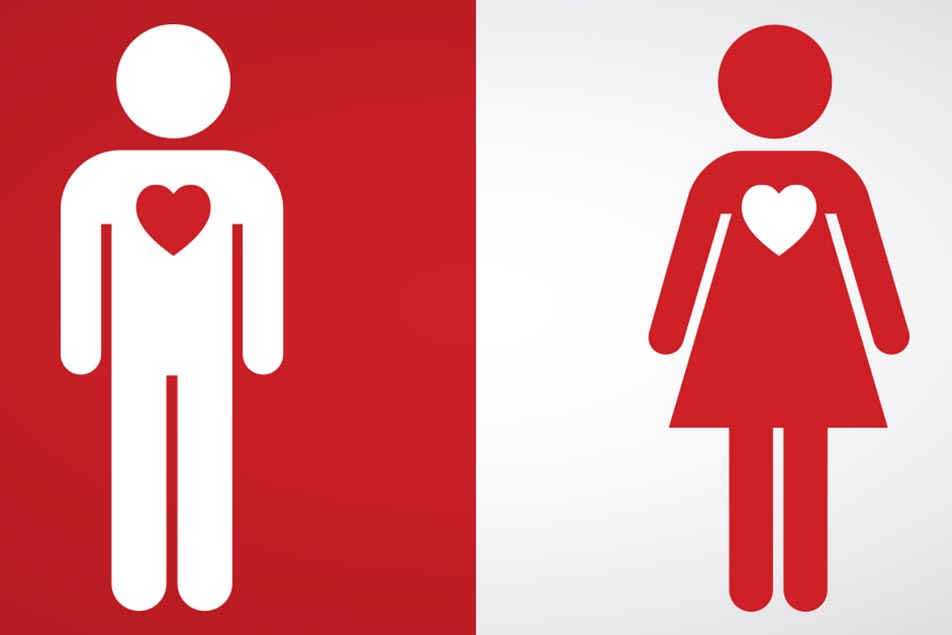
American Heart Month is an excellent reminder to brush up on the facts about cardiovascular disease and make sure you know the risks, but, as we learned from Roy Robertson, MD, Parkview Physicians Group – Cardiology, the symptoms associated with those risks could look different depending on your gender.
“Cardiovascular disease is the most common killer of men and women in the United States and, in fact, the world, and the one thing that I think we need to be aware of, is heart disease acts physiologically, or internally, different in women than it does in men, and so outwardly then the results are different,” he said. “For example, it kills 6 times more women than breast cancer, and when women do have a heart attack they are about twice as likely to die as a result of that heart attack; about 42% compared to that of men, which is about 24%.”
Why the discrepancy? While the answers aren’t necessarily concrete, Dr. Robertson has years of experience from which to draw the likely influences. “ I think part of that has to do with the physiology and the differences in men and women, but it also has to do with the way the healthcare community over the years has treated heart disease in men and women. There’s also the perception amongst the female gender in the bigger sense, and their willingness to accept cardiovascular disease as a true problem. There’ve been many interesting studies of women who have heart disease or have been told they’re at high risk and their acceptance rate of that information, and it’s much lower than men. That perception that women do not have heart disease as often as men is 0.”
Part of addressing the varying symptoms and perception is adjusting the model of care in response. “The healthcare community has come a long way in recognizing these differences and treating females in particular in a more aggressive sense to optimize the outcome. It’s taking some work to get that perception across the communities and to have women understand that it’s in fact a very big problem and something we need to pay attention to. Also, the research lately, looking physiologically at how we develop blockage is making it very clear that there are some significant differences between the sexes. So we’re tailoring all of those factors into a package to try and get the patients into the right setting so they get the right treatment and subsequently the most optimal outcome.
I think the signals or warning signs of cardiovascular disease are much different in men and women in general. Now, that’s not to say that a female could not have the classic signs and symptoms of a heart attack, but in general what we find is they’re more what we call ‘atypical,’ which just means they don’t meet our expectation. The symptoms may be more fleeting. They may be less dramatic. They may be more of a sharp quality than a dull quality. They may be more associated with shortness of breath. They may have an overall sense of ill feeling where a male may have more crushing chest discomfort. There are a lot of reasons for that. One might be the perception of pain, which is much different typically in men than in women. That’s taken some sensitivity in the medical community to learn and to be a little more vigilant in pursuing appropriate testing, risk stratification and those sort of things.”
Of course there’s also the emotional and behavioral gap between the genders. Women often downplay a physical setback in order to continue being the caretaker themselves. Dr. Robertson agrees. “Women should go to the doctor as soon as they have that intuition that it’s the right thing to do; that what’s happening to their body is not correct. Often times, when men get into trouble they are around other individuals who will look at them, have them describe what they are feeling and take them to the doctor. Women not so much. They tend to downplay things. They’re very busy. They’re very strong and they don’t want to let their family or coworkers down. So they tend to say it’s probably just a bad day for me. But we have to listen to ourselves and how we feel, and, if we are able to sit back and understand there’s been a significant change in those things that are important – how active I can be without having symptoms, do I get short of breath, are my legs swollen, do I feel light-headed, am I having difficulties with my speech, do I feel exhausted even after a good night’s sleep – they can indicate that something isn’t right. An appropriate evaluation will quickly lead to some resolution.”
Learn more about when to call 9-1-1 | prevention | the HeartSmart CT Scan | our WomenHeart support group



